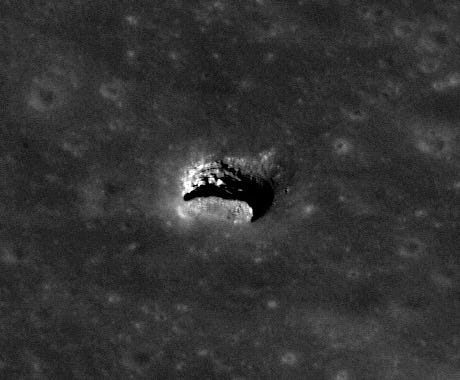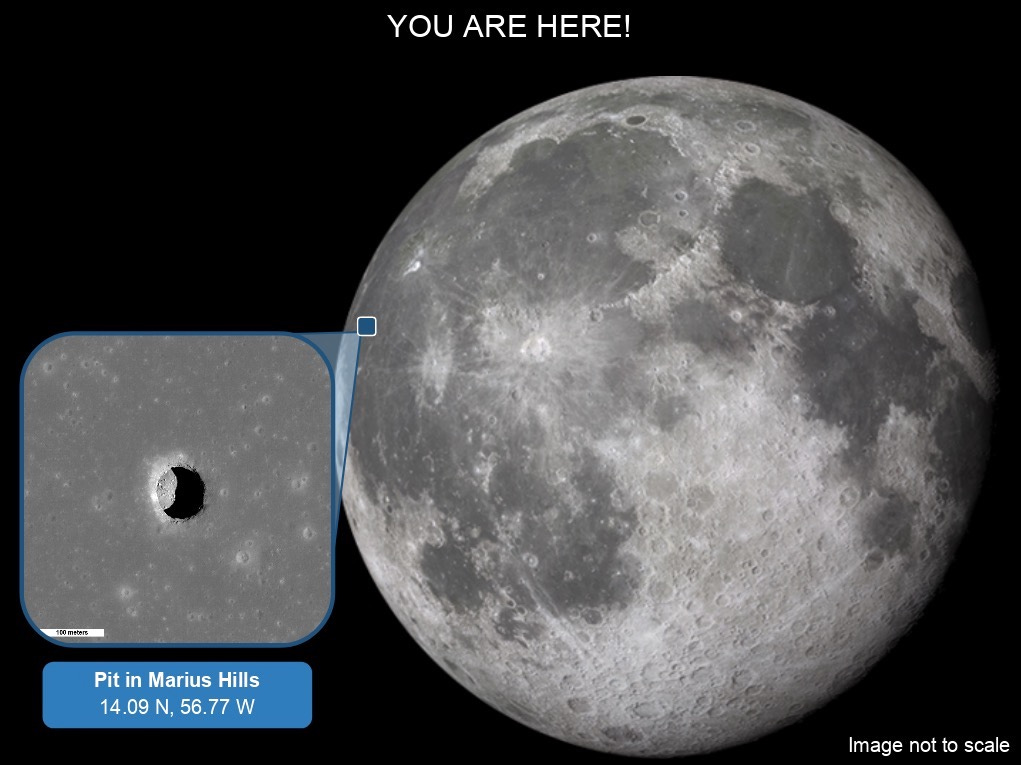Underground lava tubes on the Moon
A pit in Marius Hills.
Seen here is an opening to a long underground channel in which lava once flowed. Enter the pit in Marius Hills on the Moon.

The first direct proof of openings to subsurface lava tubes on the Moon came from the Japanese lunar orbiter Kaguya. It imaged the pit in the Marius Hills region under different lighting conditions. This allowed to see if the pit is an opening to a longer passage underground or just a sink hole.
Turns out that much like lava tubes on Earth, the 65 meters wide pit seems to be an entrance to a fairly large lava tube spanning 100 meters in height. Later higher resolution images from NASA's Lunar Reconnaissance Orbiter (LRO) confirmed the results. Kaguya spacecraft also bounced radars and saw multiple echos from the pit, indicating a potentially long lava tube with enough volume to build an entire city inside. Since then, many more pits have been identified, which may also be openings to lava tubes.
Such subsurface tubes were once host to lava flows when our Moon was volcanically active. when volcanic lava flows cease, their surface can harden while the lava within drains to leave behind an underground tunnel. Openings to such lava tubes, such as this pit, can form when lava flows breach the surface or if part of a surface collapses due to hot flows beneath.
Lunar lava tubes are protected from significant radiation and micrometeorite bombardment on the Moon’s surface, making them pristine places to study the Moon’s volcanic past and analyze rock samples untouched for well over a billion years. These traits combined with relatively stable temperatures also make them potentially good places to build sustainable habitats in.

